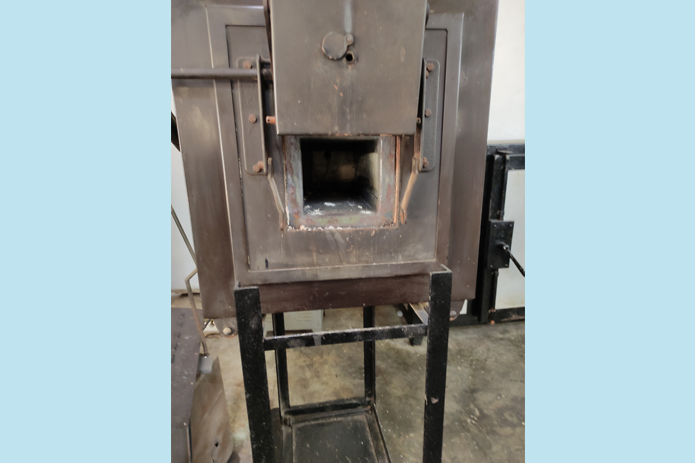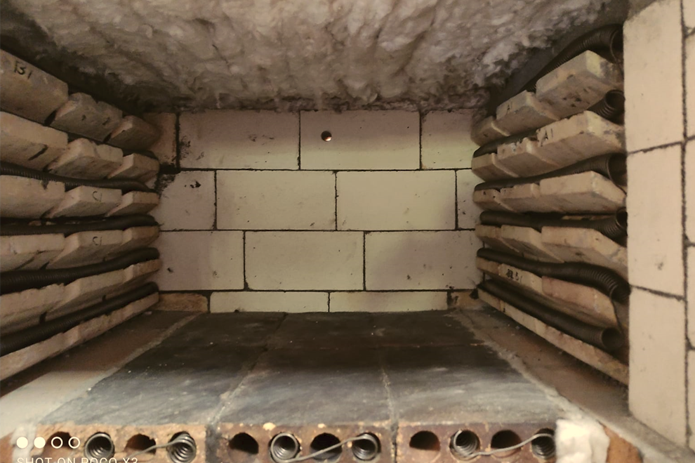

laboratory furnace it is electrically heated batch type furnace basically used in laboratory for drying, moisure is removed from the sample, baking, where a sample is heated without dehumidification and curing, whrer the sample is chemically or physically altered. muffle funcaces allow for the isolation of a material to reduce the risks of cross-contamination and identify specific properties.
A laboratory furnace is a device employed in scientific exploration, industrial operations and educational environments to subject materials to high temperatures.These furnaces are designed to provide controlled heating environments for various purposes such as melting, sintering and heat treatment of materials.
1.Heating Elements: These are responsible for generating heat within the furnace. Common heating elements include resistance wire, graphite rods, silicon carbide elements and molybdenum disilicide elements.
2.Temperature Control: These type of mechanism are equipped with temperature control systems to regulate the heating process. This may involve thermocouples for temperature sensing and feedback loops to adjust power to the heating elements accordingly.
3.Insulation: Furnaces are insulated to minimize heat loss and maintain temperature uniformity within the chamber. Insulating materials such as ceramic fiber, refractory bricks and insulation boards are commonly used.
4.Chamber: The chamber is the enclosed space where the material to be heated is placed. It may be made of stainless steel, ceramic or other heat resistant materials.
Laboratory furnaces are essential tools in various scientific disciplines and industrial applications. They are used primarily for heating, melting and testing materials under controlled temperature conditions.
Here are some common uses of laboratory furnaces:1.Heat Treatment: Laboratory furnaces are often used for heat treating materials such as metals and ceramics. This process involves heating the material to specific temperatures and then cooling it to alter its properties, such as hardness, strength, and ductility.
2.Annealing: Annealing is a thermal treatment procedure whereby a material is heated to a precise temperature and subsequently cooled gradually to minimise internal tensions, enhance ductility and refine the material's malleability.Laboratory furnaces provide precise temperature control necessary for annealing various materials.
3.Melting and Casting: Laboratory furnaces with high-temperature capabilities are used for melting metals, alloys, and other materials for casting purposes. These furnaces are equipped with crucibles or molds where the materials are melted and poured into desired shapes.
4.Synthesis of Materials: In chemistry and materials science, laboratory furnaces are utilized for synthesizing new materials through processes such as chemical vapor deposition (CVD), sintering, and crystallization. These processes often require precise temperature control and inert atmospheres, which laboratory furnaces can provide.
5.Drying and Evaporation: Laboratory furnaces are used for drying and evaporating solvents or moisture from samples. Vacuum ovens, which are a type of laboratory furnace, are commonly employed for this purpose, as they allow for drying at lower temperatures and under reduced pressure to prevent sample degradation.
6.Calibration and Testing: Laboratory furnaces are used for calibrating temperature sensors and testing the heat resistance of materials. These tests help ensure the reliability and accuracy of temperature measurement devices and evaluate the performance of materials under high-temperature conditions.
7.Research and Development: In research laboratories, furnaces are indispensable tools for conducting experiments and studying the behavior of materials at different temperatures. Researchers use furnaces to explore phase transitions, thermal properties, and reactions of various substances.
8.Quality Control: Laboratory furnaces play a crucial role in quality control processes for industries such as aerospace, automotive, and electronics. By subjecting materials and components to controlled heating and cooling cycles, manufacturers can assess their performance, durability, and adherence to specifications.
Laboratory furnaces come in various types and configurations depending on the specific application and temperature range required.
Laboratory furnaces are versatile pieces of equipment used in various industries for a range of applications that involve heating, melting, annealing, sintering, or otherwise processing materials under controlled conditions. Here are some industries where laboratory furnaces find application:
1.Metallurgy and Metalworking: In metallurgical laboratories and metalworking industries, furnaces are used for melting, casting, heat treating, and testing metals and alloys. These furnaces can be electric resistance, induction, or gas-fired, depending on the specific requirements.
2.Chemical Research and Pharmaceutical Industries: Laboratories in chemical research and pharmaceutical industries utilize furnaces for tasks such as drying, calcination, pyrolysis, and synthesis of various compounds. These furnaces may need to operate under inert atmospheres or controlled gas environments.
3.Environmental Testing and Analysis: Laboratories involved in environmental testing may use furnaces for tasks like soil analysis, ashing, and volatile content determination. Furnaces are employed to heat samples for analysis or to simulate environmental conditions for testing purposes.
4.Electronic and Semiconductor Industries: Laboratories in the electronics and semiconductor industries use furnaces for processes such as semiconductor wafer processing, thin-film deposition, and diffusion. These furnaces are often specialized and require tight temperature control and purity of the atmosphere.
5.Research and Development: Laboratories across various research fields, including physics, chemistry, biology, and engineering, utilize furnaces for conducting experiments, synthesizing materials, and exploring new processes. Furnaces offer researchers the ability to precisely control temperature and atmosphere, enabling them to replicate and study specific conditions.
Quality Control and Testing Laboratories: Furnaces are used in quality control and testing laboratories across industries to test the durability, heat resistance, and other properties of materials under controlled heating conditions. This includes testing materials for aerospace, automotive, construction, and other applications.
| Technical Specifications | ||
|---|---|---|
| Type Of Furnace | Batch type laboratory muffle furnace. | |
| Furnace Temperature | 500ºC - 1200ºC Max | |
| Mode Of Heating | Electrically heated | |
| Mode of temperature control | Automatic | |
| Mode Of charging/Discharging | Manual | |